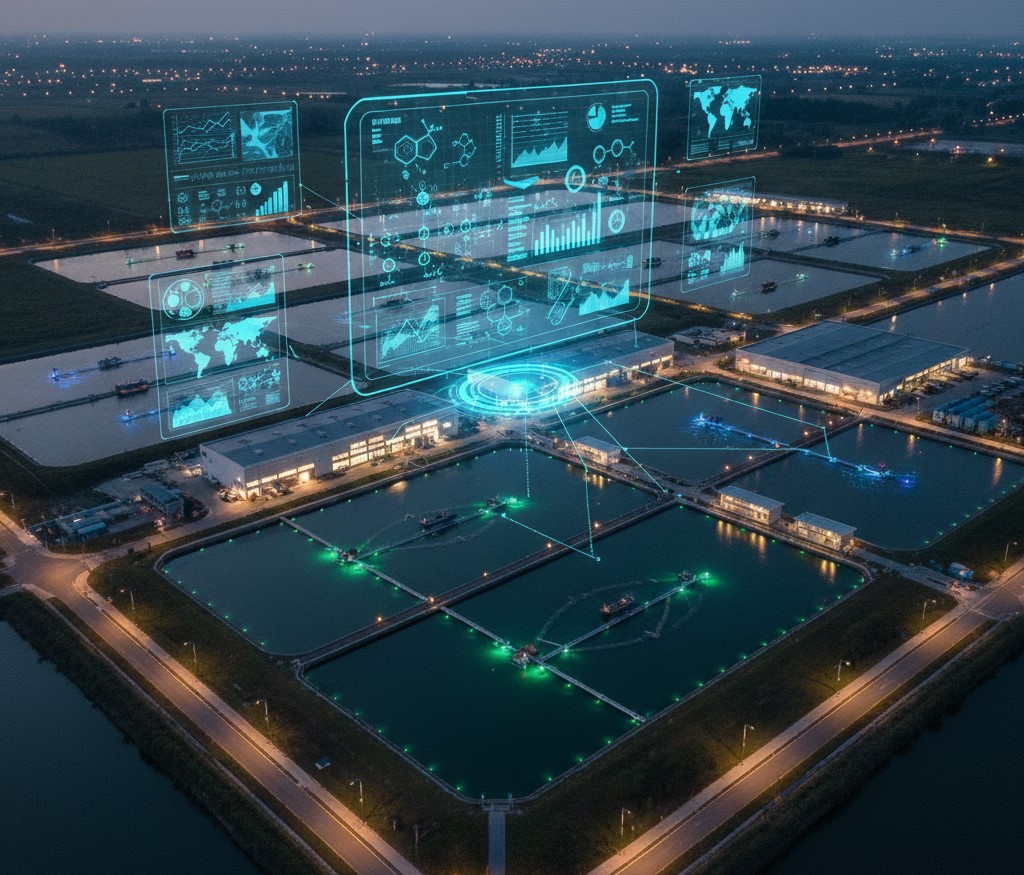-
Noticias Feed
- ECOSYSTEM
- EXPLORE
-
Páginas
-
Grupos
-
Eventos
-
Blogs
Sustainable Aquaculture Additives Drive Growth in Eco-Friendly Fish Farming

The Aquaculture Additives Market was valued at US$ 10.89 billion in 2023 and is projected to reach US$ 16.10 billion by 2031, growing at a CAGR of 4.94% during the forecast period 2024–2031.The market is witnessing strong growth driven by rising global seafood consumption, increasing aquaculture production, and the need for sustainable feed and water management solutions.
Aquaculture additives including feed enzymes, probiotics, vitamins, amino acids, antioxidants, and binders play a vital role in improving fish health, enhancing feed efficiency, and ensuring water quality. These additives are critical for optimizing productivity, reducing disease outbreaks, and minimizing the environmental footprint of fish farming operations.
Growing demand for functional feed ingredients, bio-based supplements, and immunity enhancers is transforming the aquaculture sector as producers shift toward sustainable and efficient farming systems. In addition, stringent food safety regulations and the rising focus on antibiotic alternatives are further accelerating market expansion.
📌 Download Your Sample Report Instantly (Corporate Email ID required for priority access):
https://www.datamintelligence.com/download-sample/aquaculture-additives-market
Key Demand Drivers :
The Aquaculture Additives Market is being propelled by the global expansion of aquaculture production, as fish and seafood emerge as key sources of protein worldwide. Increasing demand for nutritionally enhanced and disease-resistant fish species has led to growing adoption of probiotics, enzymes, and vitamins in feed formulations.
Government policies promoting sustainable aquaculture, along with the rising demand for organic and antibiotic-free seafood, are stimulating innovation in additive formulation. Furthermore, the integration of biotechnology and precision nutrition is creating new opportunities for efficiency and environmental control in aquaculture systems.
Market Drivers :
-
Rising Aquaculture Production: Growing seafood demand driving large-scale, intensive fish farming.
-
Focus on Sustainability: Additives enabling reduced environmental impact and improved resource efficiency.
-
Shift to Antibiotic Alternatives: Growing use of probiotics, enzymes, and phytogenics for disease prevention.
-
Nutritional Innovation: Enhanced formulations improving growth performance and feed conversion ratio.
-
Government Support: Aquaculture development programs and sustainable farming initiatives worldwide.
Market Segmentation:
-
By Type: Feed additives (amino acids, vitamins, minerals, enzymes, probiotics), water treatment additives, and others. Feed additives dominate due to their critical role in nutrition and health management.
-
By Species: Fish, crustaceans, mollusks, and others. Fish segment leads the market owing to large-scale freshwater and marine aquaculture operations.
-
By Function: Growth promotion, disease prevention, water quality enhancement, and digestion improvement.
-
By Source: Synthetic, natural, and bio-based additives, with bio-based gaining momentum due to environmental focus.
-
By Region: Asia-Pacific dominates due to large aquaculture production in China, India, and Vietnam; Europe and North America are growing rapidly with sustainable aquaculture expansion.
Key Observations :
-
Asia-Pacific accounts for over half of global aquaculture additive demand.
-
Rapid innovation in bio-based feed additives and microbial probiotics.
-
Increased collaboration between feed manufacturers and biotechnology companies.
-
Strong regulatory push for antibiotic-free and organic aquaculture practices.
-
Advancements in enzymatic formulations and nutritional precision technologies.
Geographic Insights :
-
Asia-Pacific: Largest and fastest-growing region, driven by high aquaculture output and government support for sustainable fish farming.
-
Europe: Strong focus on sustainable seafood certification and environmentally friendly aquafeed production.
-
North America: Growth fueled by rising salmon and tilapia production and innovation in natural feed additives.
-
Latin America: Increasing shrimp and fish farming activity in Brazil, Chile, and Ecuador supporting market growth.
-
Middle East & Africa: Emerging aquaculture projects and water treatment additive adoption gaining momentum.
Key Players :
-
Cargill, Incorporated
-
Alltech, Inc.
-
Adisseo Group
-
Evonik Industries AG
-
Archer Daniels Midland Company (ADM)
-
DSM-Firmenich AG
-
Biomin Holding GmbH
-
Novozymes A/S
-
Nutreco N.V.
-
Kemin Industries, Inc.
Latest Developments & Trends :
-
Development of natural, plant-based, and microbial feed additives.
-
Increasing research in aquatic probiotics and enzyme efficiency enhancement.
-
Expansion of functional aquafeed production with immunity-boosting properties.
-
Growing partnerships between feed producers and aquaculture research institutes.
-
Rising use of nanotechnology and biotechnology to improve nutrient bioavailability.
Challenges & Restraints:
-
High Production Costs: Premium bio-based additives raise operational expenses.
-
Regulatory Complexity: Strict approval processes for new ingredients.
-
Environmental Sensitivity: Overuse of chemicals can affect water ecosystems.
-
Limited Awareness: Small-scale farmers slow to adopt advanced additive solutions.
-
Supply Chain Disruptions: Raw material shortages and logistics challenges impact production.
Strategic Outlook & Recommendations:
The Aquaculture Additives Market is evolving toward precision nutrition and sustainability, offering significant opportunities for innovation and growth. Companies should invest in research-driven, bio-based formulations that improve feed efficiency and aquatic health.
Strategic collaborations between additive producers, aquafeed manufacturers, and research bodies can accelerate product development. Adoption of digital monitoring systems and precision feeding technologies will further enhance efficiency and traceability.
Firms focusing on sustainable, cost-effective, and regulatory-compliant solutions will gain a competitive advantage in the next phase of aquaculture modernization.
Conclusion:
The Aquaculture Additives Market is a cornerstone of sustainable aquaculture, ensuring optimal growth, nutrition, and health for farmed aquatic species. Despite challenges like high costs and regulatory constraints, increasing seafood demand and innovation in bio-based additives are driving robust global growth. As sustainability and efficiency become the industry’s guiding principles, aquaculture additives will play a pivotal role in shaping the future of responsible fish farming.
- Art
- Causes
- Crafts
- Dance
- Drinks
- Film
- Fitness
- Food
- Juegos
- Gardening
- Health
- Home
- Literature
- Music
- Networking
- Other
- Party
- Religion
- Shopping
- Sports
- Theater
- Wellness


